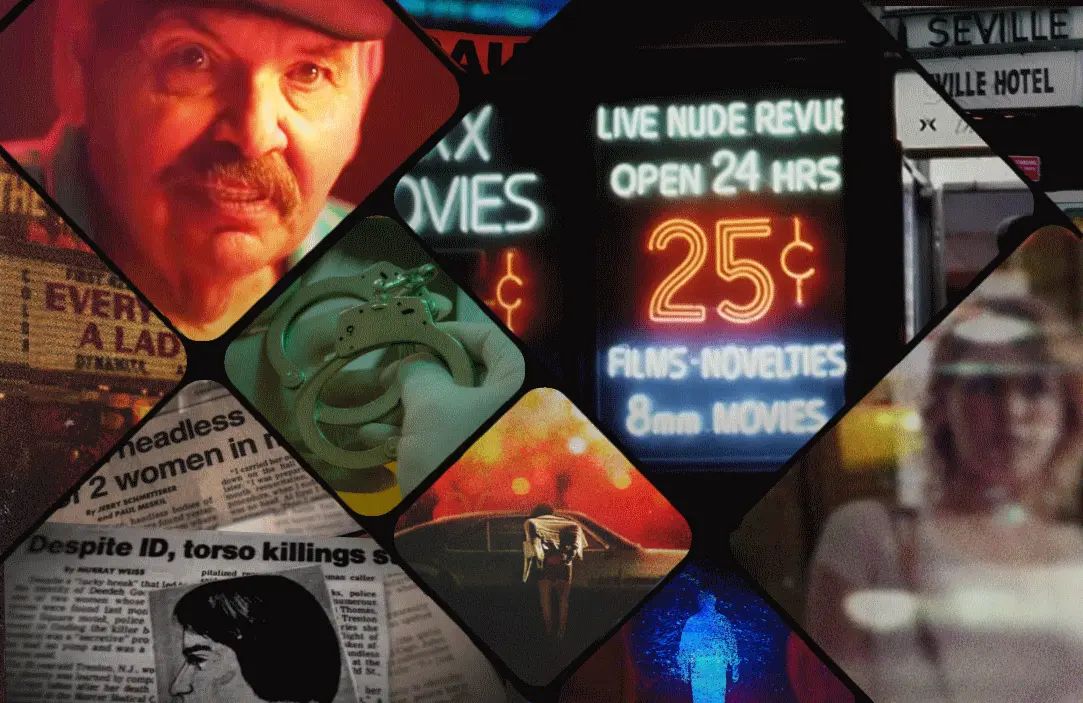Crime Scene: The Times Square Killer Is a Worthy Successor to The Vanishing at the Cecil Hotel
-
 Photos: Netflix
Photos: NetflixWith so much true crime product flooding the market, it can be difficult for a new show to rise above the noise, but last February's Crime Scene: The Vanishing at the Cecil Hotel managed to do just that. Focused on the mysterious 2013 disappearance of 21-year-old Canadian tourist Elisa Lam from inside the notorious Los Angeles hotel, the four-parter from true crime uberproducer Joe Berlinger was the first in a series of planned docuseries looking at the role of place in high profile criminal cases.
For the show's second season, premiering today on Netflix, Berlinger couldn't have picked a better location than 1970s Times Square. Before its most recent incarnation into a hub for tourism and entertainment, Times Square was rife with sex and crime, and a lack of oversight from the police enabled predators to exploit sex workers, or worse. This near-lawless environment serves as the focal point of Crime Scene: The Times Square Killer, a profoundly chilling look at one man’s vicious rampage and the social and systemic forces that allowed his horrific crimes to go unnoticed.
Like its predecessor, The Times Square Killer follows a fairly conventional true crime format. The first episode opens with a brief history of Times Square, which, as one expert describes, “was considered an atrocity” in the 1970s. Where today billboards advertise the latest Disney blockbuster or an artist’s new album, marquees offering live sex shows and XXX pornography once lit up 42nd Street. It was against this backdrop of debauchery that, in December 1979, officers were called to put out a fire in a room at the Travel Inn Hotel, where firefighters discovered two dead women with their heads and hands cut off. One of the victims was later identified as Deedeh Goodarzi, a 22-year-old sex worker, while the other remains a Jane Doe to this day.
Over the course of the next 45 minutes, Crime Scene lays out the details of the crime through reenactments and interviews with former NYPD officers and criminal profilers. Some of these reenactments are a bit heavy-handed — the show repeatedly returns to footage of airbrushed, rigid-looking mannequins after detectives describe putting the victims’ clothing on them to help the public identify the victims — but on the whole, they contribute to the sense of unease that the series quickly develops. This feeling only intensifies when a third victim, Jean Reyner, is found in the historic Seville Hotel with her breasts removed and placed on the headboard. By the end of the premiere, detectives realize a pattern has emerged, and the next two episodes follow the winding, increasingly-frustrating path to catching the man who becomes known the Torso Killer, Richard Cottingham.
Cottingham’s killing spree is certainly prime for true crime exploration — he's been convicted of murdering 11 women, but claims to have committed nearly 100 murders — and Crime Scene: The Times Square Killer tells his story ably, but Berlinger’s docuseries really excels when it places Cottingham’s crimes into a larger context. Interspersed with interviews from NYPD officers and the victims’ family members (the story of Jennifer Weiss, Deedeh Goodarzi’s daughter, is particularly affecting) is commentary from former sex workers, researchers, and historians who explain how Times Square turned into a place where someone like Cottingham, who presented as a mild-mannered family man with a good job, could get away with committing such heinous acts. In a world where women were seen as commodities, men felt they were entitled to anything they wanted, and sex workers bore the brunt of that abuse. And due to a crackdown on sex work and antiquated rape laws, women who came forward with assault claims were often arrested themselves, fostering an antagonistic relationship between those working in Times Square and the police officers who patrolled it. What emerged was an environment in which men like Richard Cottingham felt emboldened to abuse sex workers, as they believed (perhaps correctly) the authorities would turn a blind eye to it.
These interviews shine a light not just on sex work in Times Square, but on the industry as a whole, and they offer a powerful argument for decriminalizing the profession. As Dr. Melinda Chateauvert, the author of Sex Workers Unite, explains, decriminalization is “a first step towards creating regulations — on [sex workers’] own terms, by themselves — in conditions that provide safety, paving the way for the stigma of being a sex worker to erode.” It's this stigma that led Cottingham to Times Square, and until it's removed, predators like him will continue to abuse women they see as less-than.
That said, if the response to The Vanishing at the Cecil Hotel is any indication, it’s likely that viewers won't be coming to The Times Square Killer for its incisive take on sex work. At its core, the second season of Crime Scene is a whodunnit, a whydunnit, and a wheredunnit all rolled into one, again elevating the series above standard true crime fare. For anyone who's spent time in New York City, the Torso Killer case is downright terrifying, and Berlinger’s docuseries leans into its more horrific details to deliver a spine-tingling experience. With just three, 45-minute episodes, it’s easy to burn through the season in one sitting, but do so at your own risk — and make sure to leave an extra light on if you’re watching at night.
Crime Scene: The Times Square Killer premieres Wednesday, December 29 on Netflix.
Claire Spellberg Lustig is the Senior Editor at Primetimer and a scholar of The View. Follow her on Twitter at @c_spellberg.
TOPICS: Crime Scene: The Times Square Killer, Netflix, Joe Berlinger, True Crime